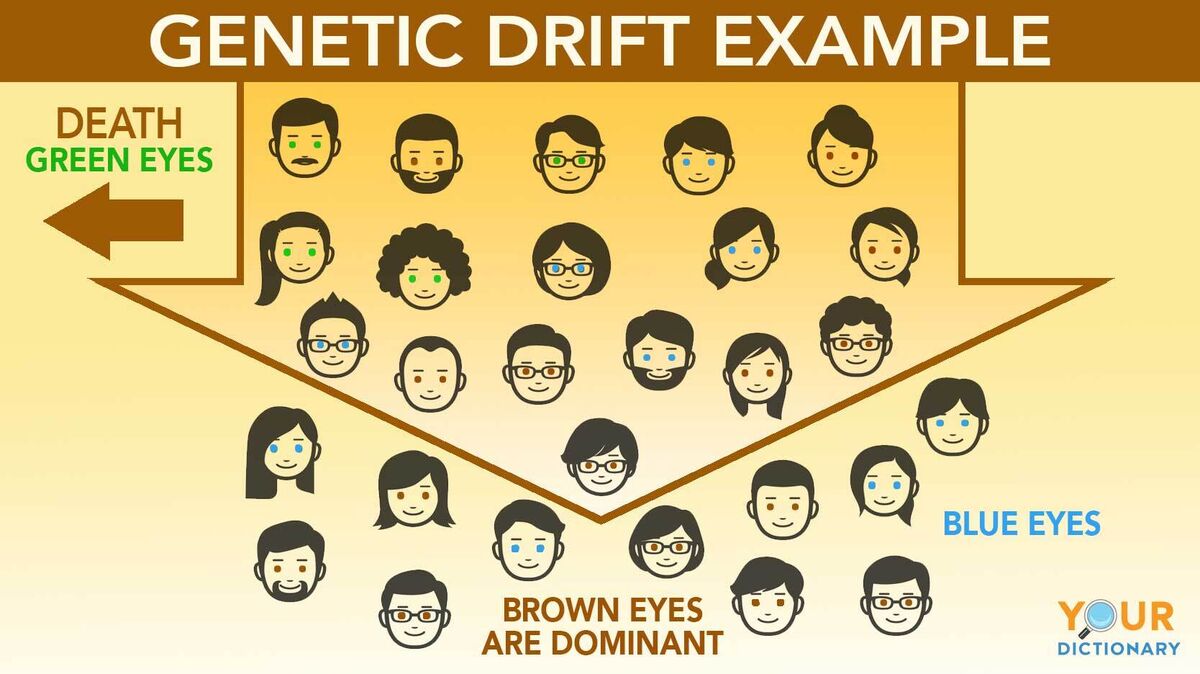
Evolutionary changes happen all the time. One of these genetic changes happens by chance and is called genetic drift. Learn more about what genetic drift is along with genetic drift examples.
What Is a Genetic Drift Example?
In evolution, genetic drift refers to the change in the frequency of an allele in a population over time. It's a random shift in the occurrence of this specific gene variation that isn’t caused by environmental factors. In simple terms, this allele randomly starts to become more or less common in a population. For example:
When people who have the gene causing a specific genetic trait, like freckles, reproduce with people who do not have the gene, the gene can become more popular (nearly everyone in that population has freckles) or totally disappear from the population (no one has freckles).
The change in the frequency of this allele within the population modifies the genetic variation found in the population.
Occurrences of Genetic Drift
Genetic drift can be tricky to understand. Using hypothetical examples can make this evolutionary concept easier to understand.
Pink Monkey Example
Of the two pink monkeys in the world — one male, one female — the male monkey mates with a white female monkey. Since white is the dominant allele, four of their five offspring are white. Slowly, through genetic drift, the instances of pink monkeys will be eliminated.
Red Hair Example
A small village has people with blonde, brown and red hair. There is a random succession of births of redheads. Since red hair is an incomplete dominant gene and blonde hair is a recessive gene, red and brown hair becomes the dominant hair color. This leads to the extinction of people with blonde hair in the village.
Freckled Dazzle Flower Example
The freckled dazzle flower exchanges genetic material with a small population of un-freckled dazzle flowers. Since the un-freckled dazzle flowers are the dominant genes, after a few seasons there are no freckled dazzle flowers left.
Green Eyes Example
Green eyes are a recessive gene. The last green-eyed person in a small town dies, leaving only brown-eyed and blue-eyed people. With the green eye gene gone, people only have brown or blue eyes in the town, with brown being more dominant.
Brown-Eyed Children Example
The father of a family has brown eyes, which is a dominant allele. The mother of the family has blue eyes, which is a recessive allele. The four children all have brown eyes by chance.
Wildflower Example
A wildflower population consisting of blue, purple, and pink flowers is subjected to a mudslide that kills most of the blue ones. As time progresses, blue flowers eventually die out, leaving only purple and pink wildflowers.
Smaller Ear Example
A dog with one ear smaller than the other mates with a dog with normal-sized ears. All of the pups are born with odd ears by chance.
Marmots Example
A large population of marmots, about half of which have spots, becomes very ill. More spotted marmots than un-spotted marmots are left; as a result, un-spotted marmots become very rare as time progresses until they die off completely.
Mallard Example
In a population of mallards with red and orange bills, only offspring with orange bills are born by chance. The very last red-billed mallard dies, leaving only orange-billed mallard populations behind.
Red Poppies Example
A large group of red poppies exchanges genetic material with white poppies. Over time, white poppies become rarer and rarer while red poppies thrive. After a while, there are no more white poppies.
Genetic Drift Examples at Play
With these examples, you now have a better idea of what genetic drift is, how it works in the real world and what type of impact genetic drift can have on a species or on a population. Understand more about evolutionary theories by looking at natural selection examples.